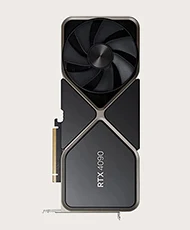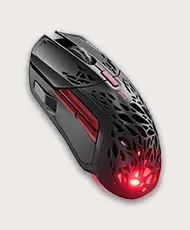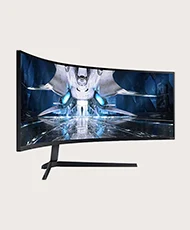Full list of Diablo 4 graphics settings
Screen Graphics Settings
Display mode
Players can change the game's display mode. Note that windowed modes can cause lower FPS.
- Fullscreen
- Windowed
- Windowed (Fullscreen)
Graphics adapter
Lists the player's GPU. If the player has multiple GPUs, they're listed as well.
Monitor
Lists the player's monitor. If the player has multiple monitors, they're shown as well.
Resolution
Higher resolutions increase clarity, but negatively affect performance. A player's resolution should match the aspect ratio of their monitor. Note that the Diablo 4 settings screen only shows monitor resolutions that are compatible with the player's monitor.
- 800x600
- 1024x768
- 1152x864
- 1176x664 (16:9 Widescreen)
- 1280x720 (16:9 Widescreen)
- 1280x768 (16:10 Widescreen)
- 1280x800 (16:10 Widescreen)
- 1280x960
- 1280x1024
- 1360x768 (16:9 Widescreen)
- 1366x768 (16:9 Widescreen)
- 1600x900 (16:9 Widescreen)
- 1600x1024 (16:10 Widescreen)
- 1600x1200
- 1680x1050 (16:10 Widescreen)
- 1920x1080 (16:9 Widescreen)
- 1920x1200 (16:10 Widescreen)
- 1920x1440
- 2048x1536
- 2560x1080
- 2560x1440 (16:9 Widescreen)
- 2560x1600 (16:10 Widescreen)
- 3440x1440 (21:9 Ultrawide)
- 3840x1600
- 3840x2160
- 5120x1440 (32:9 Super Ultrawide)
- 5120x2160
- 8192x4320
Refresh Rate
Adjusts the number of frames the player's monitor shows per second.
- 30Hz
- 60Hz
- 120Hz
Sharpen Image
Controls the amount of sharpening filter.
- Slider bar with range of 1 - 100
Font Scale
Changes all font sizing in the game.
- Small
- Medium
- Large
Cursor Scale
Changes all cursor sizing in the game.
- Small
- Medium
- Large
HDR
Provides more detail in the lighting of the game's visuals. Note that this checkbox is disabled for monitors that don't support HDR.
- On
- Off
Vertical Sync
Synchronizes the framerate to some fraction of the monitor's refresh rate. Suggested if players experience screen tearing while playing.
- On
- Off
Lock Cursor
The game's cursor can't go outside the window while in Windowed and Windowed (Fullscreen) modes.
- On
- Off
Peripheral Lighting
Toggles lighting features on connected peripherals, like keyboards and mice.
- On
- Off
Brightness
Players calibrate brightness by sliding a bar to the right until an image of Lilith becomes visible on their monitor.
Color Blind Filter
Turns on a filter to assist those with color blindness.
- Off
- Deuteranopia: difficulty telling green from red
- Protanopia: difficulty telling red from green
- Tritanopia: difficulty telling blue from green, and yellow from red
Performance Graphics Settings
Resolution Percentage
Changes the scale of textures. Default value is 100%.
- Slider bar with range of 50 - 200%
Temporal Reconstruction
When enabled, half as many pixels per frame are rendered and data from past frames are used to reconstruct a full resolution image.
- On
- Off
DLSS
Standing for "Deep Learning Super Sampling," DLSS renders the game at a lower resolution and upscales the monitor's resolution using deep learning. Blizzard suggests this improves performance, but could produce visual artifacts.
- Off
- Ultra Performance
- Performance
- Balanced
- Quality
Max Foreground FPS
Adjusts the max framerate while running in the foreground.
- Slider bar with range of 15 - 400
Max Background FPS
Changes the maximum framerate while running in the background.
- Slider bar with range of 1 - 400
Quality Graphics Settings
Players can choose a quality performance profile that includes a host of recommended settings based on their selection, or choose "Custom" to individually tweak the quality settings.
- Low
- Medium
- High
- Custom
Texture Quality
Adjusts the texture clarity and sizes used in the game. Higher texture quality produces more detail, but requires more RAM and GPU VRAM.
- Low
- Medium
- High
Anisotropic Filtering
Decides the number of samples used in anisotropic filtering, which makes distant objects in the game appear sharper.
- Off
- 2x
- 4x
- 8x
- 16x
Shadow Quality
Determines the method and quality of shadows. Lowering this setting can improve performance.
- Low: Low res terrain shadows, blob-shadows for units
- Medium: Low res terrain shadows, high res dynamic shadows close to player
- High: High res dynamic shadows for the whole scene
- Highest: High res, highest quality dynamic shadows for the whole scene
Dynamic Shadows
Toggles the rendering of dynamic shadows. Turning this off can increase performance.
- On
- Off
Soft Shadows
Toggles the rendering of soft shadows. Turning this off can increase performance.
- On
- Off
Shader Quality
Determines the quality of various effects. Turning this off can increase performance.
- Low
- Medium
- High
SSAO Quality
SSAO is short for Screen Space Ambient Occlusion, which provides realistic lighting for environmental objects in the scene. This setting controls the quantity of samples used for SSAO. Decreasing it can improve performance.
- Off
- Low: 16 samples
- High: 24 samples
Fog Quality
Determines the method and quality of fog. Decreasing this may improve performance.
- Low: low resolution fog
- Medium: medium resolution fog
- High: high resolution fog
Clutter Quality
Decides the density and distance that ground clutter items (e.g., foilage, grass, and items) are placed. Decreasing this may improve performance.
- Off: no clutter
- Low: clutter is placed at short distance and low density
- Medium: clutter is placed at medium distance and medium density
- High: clutter is placed at high distance and high density
- Highest: high quality clutter with shadows
Fur Quality Level
Controls the quality of fur on player equipment, monsters, and the environment. Can decrease to improve performance.
- Low: lowest fur density, some edge artifacts might be visible
- Medium: medium fur density with moderate visual quality
- High: high fur density with highest visual quality
Water Simulation Quality
Controls the texture size used to simulate water. Higher quality provides more detail, but requires more video memory. Texture Quality depends on your total VRAM.
- Low
- High
Anti-Aliasing Quality
Determines the quantity of samples drawn for Anti-Aliasing, which helps for smoothing out edges in the scene.
- Low: 4 samples
- High: 8 samples
Geometric Complexity
Determines the distance where meshes begin to lose detail. Decreasing this can improve performance.
- Low
- Medium
- High
Terrain Geometry Detail
Decides the detail amount for terrain meshes. Decreasing this may improve performance.
- Low
- High
Physics Quality
Controls the realism of gravity and colliding objects. This relies on your CPU.
- Low: 75% reduction
- High: no reduction
Particles Quality
Determines the quantity of particles spawned.
- Low: 75% reduction
- Medium: 37.5% reduction
- High: No reduction
Reflection Quality
Controls the quantity of reflection probes. Lowering this causes some reflections to be less accurate, but improves performance.
- Low
- High
Screen Space Reflections
Toggles whether Screen Space Reflections are used.
- On
- Off
Distortion
Toggles whether screen space distortion is used. Turning this off can improve performance.
- On
- Off
Low FX
Reduces the quantity of rendered particle system effects. Checking this can improve performance.
- On
- Off
Diablo 4 Ultrawide support
As Diablo 3 did, Diablo 4 supports Ultrawide monitors and handles 3440x1440 resolution (21:9 aspect ratio) just fine. At this resolution, Diablo 4 doesn't use black bars on the side of the screen during gameplay.
Super Ultrawide support
Players can play Diablo 4 on Super Ultrawide monitors (5120x1440 resolution with 32:9 aspect ratio); however, black bars are used on the side of the screen throughout gameplay and cutscenes.
An Open Beta player confirmed this on their 5120x1440 / 32:9 Super Ultrawide monitor: [1]
Ultrawide monitors becoming more popular
According to Steam's latest Hardware and Software survey, roughly 5% of gamers use a monitor with ultrawide resolutions [2]. Although that sounds small, it has risen at a fast clip in the past few years.
Best Ultrawide monitor for Diablo 4?
After scouring sources like reddit and tech review sites (e.g., RTINGS.com), we found that the top recommended ultrawide gaming monitor is Dell's Alienware AW3423DW. Its new QD-OLED technology gives it the most intense black levels and colors compared to other monitors, while sporting a 175Hz refresh rate with both G-SYNC and FreeSync support. It retails for about $1,300.
Increasing Diablo 4 frames per second
For players that have mid to high range PCs and expected better graphics performance from Diablo 4, there's a handful of settings to target first to increase FPS (first identified by redditor, gorays21).
Players should set their graphics profile to Ultra and then tweak these settings:
| Setting | Level |
|---|---|
| Shadow Quality | Medium |
| SSAO Quality | Low |
| Fog Quality | Low |
| Clutter Quality | Medium |
| Geometric Complexity | Low |
If FPS is still sluggish, players can change Ultra profile to High and then try the settings.
TOPSources
| Article | Source | Date | |
|---|---|---|---|
| 1. | Diablo 4 on 5120x1440 resolution and 32:9 aspect ratio | YouTube | |
| 1. | Steam Hardware & Software Survey | Steam |
Changelog
| Ver | Change | Date | |
|---|---|---|---|
| 1.0 | Refreshed guide with Release graphics setting information | ||
| Beta | Refreshed guide with Open Beta monitor settings | ||
| Beta | Added confirmation of ultrawide monitor support | ||
| Alpha | Published original |







